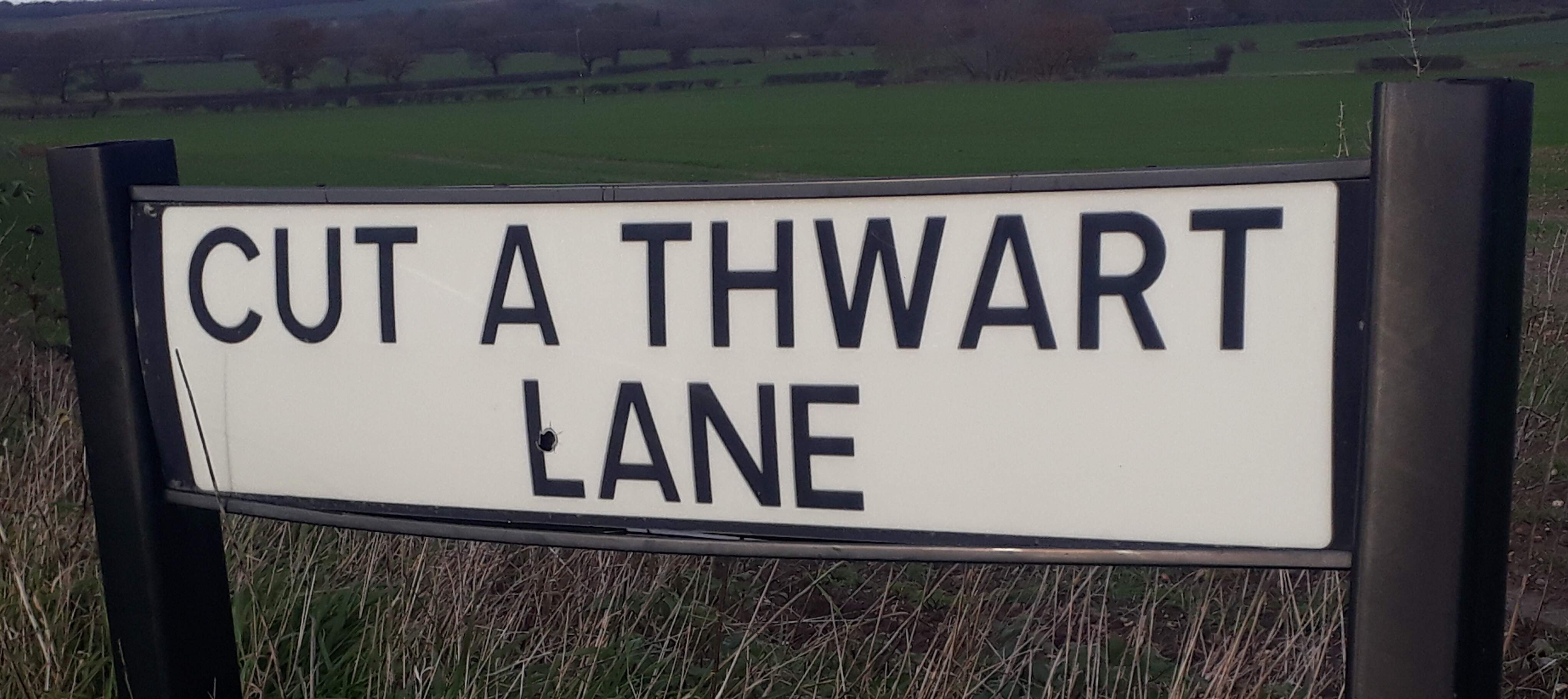Given our enjoyment of walking and in uncovering the unusual, last weekend’s walk just had to begin an investigation into the past. Coming across a road sign, Cut-A-Thwart-Lane, had the cogs in our minds working. The obvious thought was that this might mean ‘Cut Throat Lane’ and indeed there are references to this.
Donna had heard the word thwart before and it wasn’t until she had looked it up that her canoeing days bought forward a boating link to the word. Indeed, its used to describe the wooden seat that reaches from one side of a boat to another. A thwart cut is a fencing maneuver with swords too but deeper research revealed that an old English meaning of the phrase had been used on the River Blackwater, which is just a short distance away from this lane. When crossing the line of a ship’s path—cut-a-thwart in 15th century England meant to cross from side to side. Cut-throat, similarly, meant a short cut or to cut across, and in this case the lane was an alternative to the milestone-lined London Road that was the main route into Maldon.
Maldon had been granted a Royal Charter by Henry II in 1171 and is an ancient Anglo-Saxon burgh. From the Iron Age it has been settled in by Romans, Saxons, Vikings and Normans--and a blog for another day is that it’s the famous site of the famous Battle of Maldon fought between Vikings and the Anglo-Saxons in 991AD. It was, then, a high-profile town back in the day.
Interestingly, Cut-A-Thwart Lane shows geographic evidence suggesting it was once a hola-weg. The road, in places is much lower than the banks that flank its side, an indication of years of pounding by humans and animals long before modern road surfaces existed. Suggestive that this lane formed the boundary of the estates of Beeleigh Abbey and Fitzwalter’s Park the sunken result still floods to this day. Oliver Rackham (1939-2015) cited thirty-eight mentions of such hola-wegs in Anglo-Saxon charters, and this lane is one of those. Beeleigh (the meaning of which is a clearing in the trees where bee hives are kept) still has a magnificent dwelling very close to the entrance of the lane.
Fascinatingly, during the summer of 1550 Princess Mary (Mary Tudor, later Queen Mary I) was under house arrest at nearby Woodham Walter Hall. Her agents hatched a plan to smuggle her onto an imperial war ship that was moored at Maldon’s Hythe in order that she could escape to the Netherlands—it was believed she would have been somewhat safer there due to her religious beliefs. Sophisticated plans were made that would have avoided the main road into Maldon. Some kind of ‘secret passage’ was planned. Mary developed cold feet, possibly realising that if she gave up and fled, as a true daughter of Henry VIII, she would find her abdications of her royal prerogative hard to accept. Jehan Dubois, Secretary to the Ambassador met with Mary and liaised with her trusted officer Robert Rochester, who begged the imperial secretary for more time. Firm in his message to her, Dubois conveyed that now was the time to escape and that they had to leave immediately. She attempted to stall for more time but Dubois slipped away and the rowing boats left without her as he feared their plot was close to being discovered.
Three years later Mary ruled England, but was Cut-A-Thwart Lane their possible route?
We’d like to think so!
